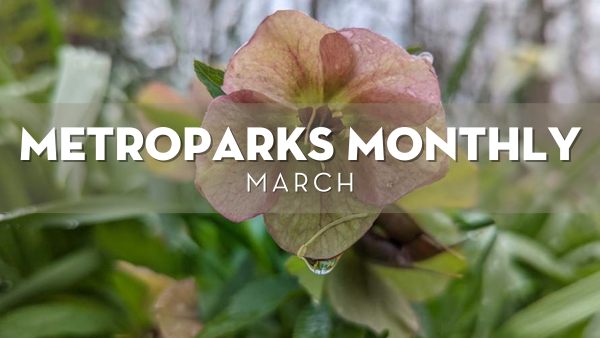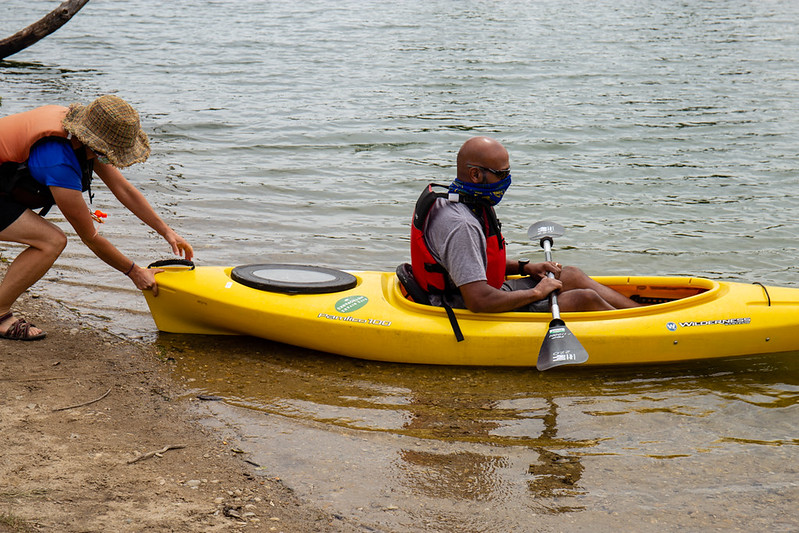Updated May 24th, 2023
Paddle safe this season
It’s getting warmer and you might be ready to boat – but do you have everything you need for a fun, safe paddling or boating experience? Watch our outdoor recreation team teach you how to prepare to paddle:
Whether you are a seasoned paddler or new to the water, you should take these critical steps before you embark on any boating adventure:
- Wear a properly fitted type 3 or type 5 life jacket while in and on the water. Learn more about different kinds of life jackets and how to ensure they are properly fitted.
- Never paddle under the influence of alcohol or drugs.
- Do not paddle alone! Paddle in groups of three or more.
- Leave a float plan for your trip with a friend and/or family.
- Dress appropriately for the weather and water conditions (bring extra clothes and proper footwear). Additionally, dress to get wet and wear natural fibers (wool, silk) or synthetic quick-dry materials (nylon, polypropylene, neoprene) rather than cotton. Wear bright colors and layers, including a waterproof one in case it rains or you get splashed with water.
- Be considerate of others on the water; give anglers and other users plenty of space.
- Paddle responsibly! Never paddle over a low head dam (submerged dam), fallen tree or other in-stream obstruction. Understand your limits and water conditions.
If you’re paddling on a river, it’s important to know the location of all hazards and low dams. Carrying a map will help you understand hazards and access points. It’s also important to plan for emergencies by knowing the weather and water conditions before you begin your trip. Know emergency signals and bring a communications device. While on the water, do no stand up in your boat and avoid weight shifts that could capsize your boat. If you are unsure how to navigate an area, scout it before traveling through.
What if you capsize?
Learning how to rescue yourself and others can also help in case of emergencies. If you capsize and are removed from your boat, move to the upstream end of the boat, grab the end loop, and swim toward the shore or eddy.
If you are swimming without your equipment, use defensive swimming and swim aggressively toward the shore. If floating through a rapid, keep your feet on the surface, head upstream and push off of any rocks with your feet. Your lifejacket will keep you afloat and help protect you.
- Strainers: Avoid all strainers by swimming aggressively away from them. Strainers are typically fallen trees, branches or object that allow water through (not solid objects).
- Low Head Dams: Portage all low head dams!
What should you pack?
In addition to your life jacket, always bring an adequate amount of food and water for your trip. Additionally, extra clothing, sunscreen, sunglasses, a pocket knife, first aid equipment, an extra paddle and emergency signaling device are good items to pack.
Is a wet suit necessary?
Did you know the body can cool down 25 times faster in cold water than air? While a 70 degree day may seem pleasant, when the water is 70 degrees, it is considered cold. When your body is too cold for too long, you may be susceptible to hypothermia. A good rule of thumb is to add the water temperature with the air temperature. If the sum is less than 125 degrees, then it’s a good idea to wear extra synthetic clothing or a wetsuit.
Follow Leave No Trace
It’s important to respect people’s property and wildlife while paddling. Avoid introducing non-native species to areas you paddle by cleaning your equipment in between trips. Dispose of trash properly and be sure to not disturb wildlife you may see while out on the water.
I’m interested in paddling, but don’t know where to start
Before you head out to the water, it’s important to know how to properly use your watercraft. Those who are just starting out and don’t want to commit to purchasing gear can join MetroParks’ outdoor recreation team for safe, in-person paddling programs. Additionally, follow MetroParks’ outdoor recreation on Facebook and on YouTube for videos like the one below.
Additional resources:
ACA Rules of the Road: What paddlers need to know
ACA: Paddler’s safety check list
How to choose the right life jacket
Miami Conservancy District – find maps, check water levels and more
Surf Dayton – hosts paddling programs
Whitewater Warehouse – hosts paddling programs
Five Rivers MetroParks – hosts paddling programs
Wright State University – hosts paddling programs





